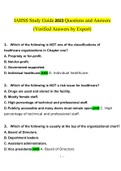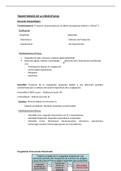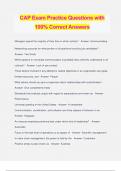Summary
Summary Social Networks - Extended Literature + Lecture Notes - 2021
- Course
- Institution
Hello, In this document you can find extensive summaries of all literature + clear notes of the lectures of the course Social Networks in 2021. Good luck learning before your exam and I hope it will help you!!
[Show more]







